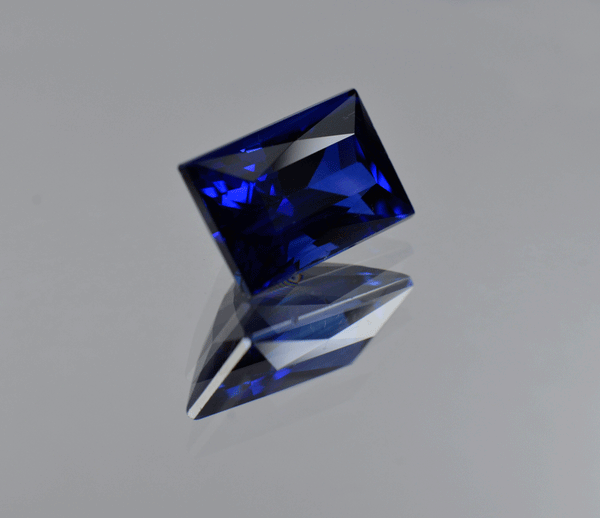The Origins of Gems October 24 2016
Geo-tagging on Facebook and Instagram is a simple concept we can all understand. Take a picture overlooking the arches of the Eiffel Tower or the golden sand dunes of Riyadh and use the GPS on your phone to share exactly where you were at that moment to your friends and family. But, how does one determine where a sapphire comes from? Most gem certificates accompanying natural gemstones authenticate the country of origin so what does it take to know where exactly a piece of Mother Nature was created?
At its elemental level, sapphires are composed of about six tenths in Aluminum and the rest in Oxygen. However, as is with many fine chefs, each batch is given a unique spin by Mother Nature and sapphire deposits from around the world contain varying levels of other ingredients such as iron, titanium and other minerals. Some gems wear their heritage openly but other require careful examination – so in order to determine their origin, gemologists look at an assortment of characteristics such as the inclusions within the stone, optical nuances and chemical composition. Ideally, these characteristics should not only point toward a particular origin but also exclude other possibilities.
A common method used to identify Kashmir sapphires is through its inclusions. Embedded within its deep velvet blue are certain pargasite and tourmaline crystals which are not found in sapphires anywhere else in the world. Similarly, uranpyrochlore inclusions are often seen in sapphires originating from Cambodia or southern Vietnam but not from locations in Burma or Kashmir. In this respect, the existence of specific inclusions can serve as a positive indicator of its true origin. In addition, certain optical nuances have also been used to differentiate sapphires that come from Kashmir. For example, the velvety blue ‘silk’ of Kashmir sapphires comes from particles that are suspended within the crystal structure that scatter and disperse light as it passes through. This low fluorescence is in direct contrast to many sapphires found in Sri Lanka which emanate a brighter and crisper tone of blue. However, these comparisons are not always clear cut. A set of complete data from gem localities from around the world has not yet been compiled to confirm local characteristics and so its identification still remains as a form of art and experiential judgement.
This is of course where science and technology steps in to wipe away the mist of uncertainty. Spectrophotometry has been a prevalent and preferred method in many laboratories to ascertain the origin of gems. The equipment enables the gemologist to separate the light that passes through a sapphire into different wavelengths characteristic of its elemental make-up. The spectrum of wavelengths indicates the proportions of a sapphire’s trace elements and these results can be used to correspond whether it of the same geographic region as a known sample of gemstones. This technique has been very successful in differentiating between sapphire ‘look-a-likes’ such as the Kashmir sapphire and the Cambodian sapphire. The key difference precipitates to a stark contrast in the concentration of iron present in gems found in these localities. Such techniques have worked wonders in building trust among traders and have compounded the growth in reliable international trade.
Despite these advancements, many improvements are still warranted. The existence of representative samples and complete data sets from around the world have hindered many identification processes but strides toward progress are made every day. The veil of ambiguity and lack of complete certainty have led to certain organizations such as the Gemological Institute of America (GIA) to abandon the issuance of origin certifications. However, the industry is constantly developing and we expect more synergies between the art and science of determining gem origins to enhance the overall level of accuracy and reliability.


